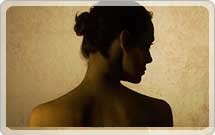Skin Care
Skin Structure and Care
The skin is the largest and most intriguing organ of the body. It is essentially a covering, but it does much more than hold us together. Unbroken skin is impervious to air, water, dust and bacteria, and so we are protected from all of these. It also eliminates waste matter and maintains and regulate body temperature. The skin is a reflection of our state of internal health and our emotions. The thickness and sensitivity of the skin varies according to the part of the body it covers and function that part is expected to perform.
Example: The soles, palms and scalp are thick. The skin on the face and lips is thin, sensitive and mobile.
Generally speaking the skin has two layers: Epidermis – outer layer and the dermis which is the inner layer. In ayurvedic terms there are seven layers known as dhatus. The innermost being plasma and the outermost being mamsa. Between these layers or dhatus are srotas, which are channels. There is a complex layer of nerves, blood vessels, oil glands, sweat glands, hair follicles, sensory cells and nerve endings.
Sensations of heat, cold, pressure, pain is conveyed by the sensory cells/nerve endings. The epidermis or top layer is made up of several rows of living cells, covered with a horny layer of dead cells. These are constantly being shed and replaced by cells from the deeper layers. True skin is the dermis where living tissue exists. The dermal layer is supplied with nutrients from the blood stream. The dermis contains supporting tissue, which gives the skin its resilience and tone. It also contains the sweat and oil glands. The surface ends of the oil glands form the pores of the skin. They secrete sebum, an oily, slightly acid film, which is deposited on the surface of the skin. This helps to lubricate the skin, while its acid content resists bacterial attacks and keeps the skin in a healthy condition.
The sweat glands help to eliminate wastes and regulate body temperature. A network of capillaries supply oxygen and nutrients to the skin and lymphatic vessels drain away waste products. The hair root lies behind the skin. In the basal layer of the epidermis are cells which produce a pigment called melanin. This determines the colour of the skin. Melanin protects the skin from the sun’s rays by acting as a natural sunscreen. The amount of pigment in the skin increases when there is exposure to sunlight, as a protective response.
Naturally , our skin is very capable of looking after itself, however, there are internal and external factors that give rise to imbalances e.g. when the oil glands are overactive, the skin becomes oil or when they are underactive, the result will be dry skin.
Ayurvedic skin and hair care is about giving the skin and scalp its natural balance. If you want to have beautiful skin most of your life, here are a few suggestions:
- Cleanse your skin twice a day
- Have an ayurvedic facial regularly after the age of 27 years
- Avoid the sun Avoid smoking
- Sleep before 10pm
- Awake at 6am
- Drink a glass of warm water with lemon and honey on awaking
- Use a face mask weekly
- Exercise regularly
- Detox your system once a week with this brew:
- You will need: one whole lemon, 1 inch square of ginger, 11/2 litres of water
- Squeeze juice of one lemon into 11/2 litres of water. Add the grated ginger to the lemon and water. Boil. Drink the liquid at intervals of no more than 10 minutes – you should have drunk all the juice within two hours as warm as possible.
OmVeda Skin Care can help to balance your skin. To view a product guide by common skin symptoms click here. For more information or advise contact our beauty advisor.
Acne Information
Caused by the over-activity of sebaceous glands. They are more numerous sebaceous glands on the face which give rise to eruptions and disturbances when they are overactive, causing acne.
With the over secretion of oil in the sebaceous duct, the excess oil enters the oil sac, which expands to retain the oil. When the pores cannot hold anymore, the excess oil oozes out, enlarging the pores in the process.
The first result is a blackhead which is like a solid plug. When the tip is exposed to air, it oxidises and turns dark – this is a blackhead. Neglected blackheads will irritate surrounding tissues, resulting in inflammation, which is setting the scene for pimples and acne. Acne includes, whiteheads, blackheads, pustules and cysts. Acne Vulgaris is a violent form of acne.
If Acne is not controlled in the early stages it can become a chronic condition. However, it can be treated. In chronic conditions, it is advisable to take medication internally as well as treat externally to expedite the process.
Stretch Marks and Cellulite Information
Stretch Marks are caused by overstretching of the skin, destroying its elasticity and resilience. Often they develop when weight loss follows weight gain, that is why stretch marks are so common post pregnancy. They are caused by the cracks in the elastic surface below, and are not on the surface.
It is difficult to totally get rid of stretch marks after they have formed, therefore preventative care is best. Extracts of turmeric, lemon, and bael fruit have been time tested. The Turmeric Cellulite cream is highly recommended.
